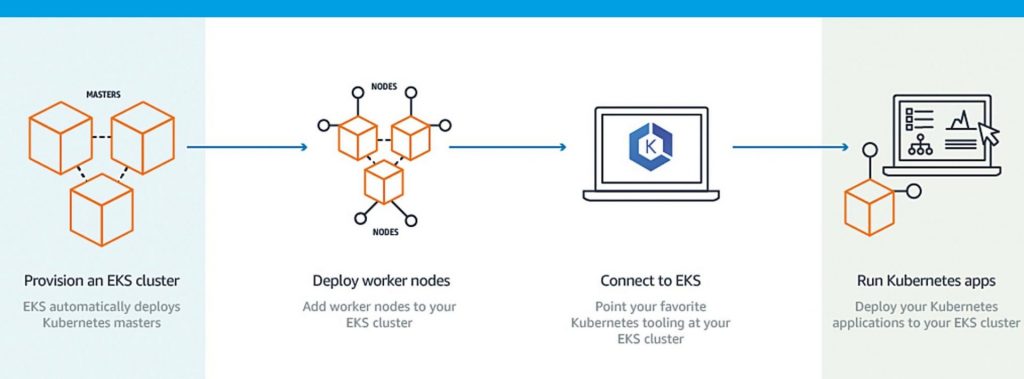Amazon EKS clusters are a managed Kubernetes service that makes it easy for you to deploy and manage containerized applications on AWS. Amazon EKS runs the Kubernetes management infrastructure for you across multiple AWS Availability Zones to eliminate a single point of failure. Amazon EKS is also integrated with many AWS services to provide robust security and networking features out of the box.
In this blog post, we will cover the following topics:
- What are Amazon EKS Clusters?
- How do Amazon EKS Clusters work?
- Benefits of using Amazon EKS Clusters
- Getting started with Amazon EKS Clusters
So, let’s get started!
What are Amazon EKS Clusters?
Amazon EKS clusters are top-level constructs in the Amazon EKS service that simulate a Kubernetes deployment. Each cluster contains a collection of one or more compute instances and a shared set of storage and networking resources. An Amazon EKS cluster is analogous to an AWS account — it is a new, stand-alone resource that you create and manage.
How do Amazon EKS Clusters work?
An Amazon EKS cluster consists of two major components: the control plane and the compute instances.
The control plane is responsible for managing the lifecycle of your Kubernetes resources (such as pods and services), and it is hosted on AWS infrastructure. The control plane consists of the following components:
- The Kubernetes API server, which is the primary entry point for all Kubernetes operations.
- The etcd key-value store, which stores the persistent state of your cluster.
- The Amazon EKS control plane manager, which makes calls to the AWS API to create and manage AWS resources on your behalf.
The compute instances are where your containerized applications run. These instances can be either EC2 instances or Fargate pods, and they are managed by the control plane.

Benefits of using Amazon EKS Clusters
There are many benefits of using Amazon EKS clusters, including the following:
Managed Kubernetes service: Amazon EKS is a managed Kubernetes service, which means that AWS takes care of the underlying infrastructure, including provisioning and patching of the control plane instances, and there are no additional charges for using the service.
Highly available: Amazon EKS clusters are highly available by design. The control plane is spread across multiple Availability Zones to eliminate single points of failure, and the compute instances can also be deployed across multiple Availability Zones for added resiliency.
Scalable: Amazon EKS clusters can scale up or down automatically to meet changing demand, and you only pay for the compute resources that you use.
Integrated with other AWS services: Amazon EKS integrates seamlessly with many other AWS services, such as Amazon VPC, IAM, and CloudWatch. This allows you to take advantage of AWS’s world-class security and networking features to build highly secure and scalable applications.
Getting started with Amazon EKS Clusters
If you’re new to Amazon EKS, we recommend that you start by reading the Amazon EKS User Guide. This guide provides an end-to-end walkthrough of creating an Amazon EKS cluster and deploying a sample Kubernetes application to it.
To get started with Amazon EKS, you first need to create an IAM role that gives your Kubernetes control plane permission to make calls to other AWS services on your behalf. For more information, see Creating an IAM Role for Your Amazon EKS Cluster.
Next, you will need to create an Amazon EKS cluster. An Amazon EKS cluster consists of a control plane and a set of compute instances where your containerized applications will run. For more information, see Creating an Amazon EKS Cluster.
Once your cluster is up and running, you can deploy your applications to it using the Kubernetes tools and APIs that you are already familiar with. For more information, see Deploying Applications to an Amazon EKS Cluster.
Conclusion
Amazon EKS clusters provide a simple, scalable, and cost-effective way to manage Kubernetes deployments in the cloud. By leveraging the power of AWS, Amazon EKS makes it easy to provision and manage Kubernetes clusters, allowing you to focus on your applications rather than infrastructure management.
Amazon EKS also offers tight integrations with other AWS services, making it easy to build and run distributed applications in the cloud. If you’re looking for a managed Kubernetes service that can take advantage of the scale and flexibility of AWS, Amazon EKS is a great option.

